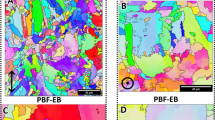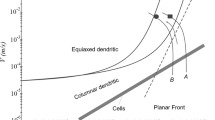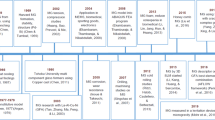Abstract
Combinatorial alloy design—an economical yet high-throughput alloy design approach, facilitates rapid screening of a wide range of compositions with limited material expenditure. The ever-growing demand for multi-functional modern materials’ necessitates the design of multi-component alloys that can cater to the requirements of end application, with targeted properties and ease of synthesis. To this end, we report the current trends in combinatorial alloy design approach that are available to develop a subset of multi-component alloys, namely high-entropy alloy (HEA) in both functionally tailored thin-film form and compositionally optimized bulk scale. The thin-film form synthesized by combinatorial magnetron sputtering approach enables generation of a library of compositions in a single-step process, i.e., developing multiple concentration gradients in a single reference substrate. While the identified, best performing compositions from the combinatorial library can then be scaled up to bulk form utilizing combinatorial vacuum induction melting route for application-oriented design and analysis. As an example, the bulk form of multi-component Fe70-xMnxCo10Cr15Cu5 (x = 10, 15, 20 at.%) HEA was developed by combinatorial vacuum induction melting route to explore the influence of Mn on phase formation and compare the same with calculation of phase diagram (CALPHAD)-based theoretical predictions. The hot-rolled alloys were subjected to bulk-scale phase analysis using X-ray diffraction, microstructure imaging by scanning electron microscopy, and chemical composition analysis by energy-dispersive X-ray spectroscopy toward understanding the role of composition on the mechanical property variation in the developed alloys. Such a comprehensive approach would facilitate on the one hand rapid identification of novel, high-performance alloys, while on the other hand support the development of experimentally guided, compositionally tuned materials database for future design of multi-component alloys be it by machine learning or by conventional methods.









Similar content being viewed by others
References
Broudy RM (1958) Dislocations and mechanical properties of crystals. J Am Ceram Soc 80:5009–5010
Chen W, Hilhorst A, Bokas G, Gorsse S, Jacques PJ, Hautier G (2023) A map of single-phase high-entropy alloys. Nat Commun 14:2856
Courtney TH (2005) Mechanical behavior of materials. Long Grove Press, Waveland
Cui J, Chu YS, Famodu OO, Furuya Y, Hattrick-Simpers J, James RD, Ludwig A, Thienhaus S, Wuttig M, Zhang Z, Takeuchi I (2006) Combinatorial search of thermoelastic shape-memory alloys with extremely small hysteresis width. Nat Mater 5:286–290
Das S, Sanjay M, Kumar S, Sarkar S, Tiwary CS, Chowdhury S (2023) Magnetically separable MnFeCoNiCu-based high entropy alloy nanoparticles for photocatalytic oxidation of antibiotic cocktails in different aqueous matrices. Chem Eng J 476:146719
Deng Y, Tasan CC, Pradeep KG, Springe H, Kostka A, Raabe D (2015) Design of a twinning-induced plasticity high entropy alloy. Acta Mater 94:124–133
Frost HJ, Ashby MF (1982) Deformation-mechanism maps: the plasticity and creep of metals and ceramics. Pergamon Press, Oxford, pp 62–63
Hall EO (1951) The deformation and ageing of mild steel: III discussion of results. Proc of Phys Soc Sect B 64:747–753
Jarugula R, Channagiri S, Raman SGS, Sundararajan G (2021) Strengthening mechanisms in nano oxide dispersion-strengthened Fe-18Cr ferritic steel at different temperatures. Metallur Mater Trans A 52:1901–1912
Lee Y-K, Lee S-J, Han J (2016) Critical assessment 19: stacking fault energies of austenitic steels. Mater Sci Technol 32(1):1–8
Li Z, Tasan CC, Pradeep KG (2015) D Raabe TRIP-assisted dual-phase high-entropy alloy: grain size and phase fraction effects on deformation behavior. Acta Mater 131:323–335
Li Z, Pradeep K, Deng Y et al (2016) Metastable high-entropy dual-phase alloys overcome the strength–ductility trade-off. Nature 534:227–230
Li Z, Ludwig A, Savan A, Springer H, Raabe D (2018) Combinatorial metallurgical synthesis and processing of high-entropy alloys. J Mater Res 33:3156–3169
Lin Y, Chong X, Ding Y, Zhou Y, Gan M, Liujie Xu, Wei S, Feng J (2021) First-principles calculations of thermal and electrical transport properties of bcc and fcc dilute Fe–X (X = Al, Co, Cr, Mn, Mo, Nb, Ni, Ti, V, and W) binary alloys. Metals 11(12):1988
Liu G, Li S, Song C, Liu Z, Junhua Du, Xie X, Wang Y, Cong D (2024) High-entropy Ti-Zr-Hf-Ni-Cu alloys as solid-solid phase change materials for high-temperature thermal energy storage. Intermetallics 166:108177
Lu Q, Xu W, Van Der Zwaag S (2014) Designing new corrosion resistant ferritic heat resistant steel based on optimal solid solution strengthening and minimisation of undesirable microstructural components. Comput Mater Sci 84:198–205
Ludwig A (2019) Discovery of new materials using combinatorial synthesis and high-throughput characterization of thin-film materials libraries combined with computational methods. Npj Comput Mater 5:70
Ludwig A, Cao J, Brugger J, Takeuchi I (2005) MEMS tools for combinatorial materials processing and high-throughput characterization. Meas Sci Technol 16:111
Marshal A, Pradeep KG, Music D, Zaefferer S, De PS, Schneider JM (2017) Combinatorial synthesis of high entropy alloys: introduction of a novel, single phase, body-centered-cubic FeMnCoCrAl solid solution. J Alloy Compd 691:683–689
Marshal A, Pradeep KG, Music D, Wang L, Petracic O, Schneider JM (2019) Combinatorial evaluation of phase formation and magnetic properties of FeMnCoCrAl high entropy alloy thin film library. Sci Rep 9:7864
Martin JW (1980) Micromechanisms in particle-hardened alloys. Cambridge University Press, Cambridge
Mohanty GC, Gowda CC, Gakhad P, Das S, Sanjay M, Chowdhury S, Biswas K, Singh A, Tiwary CS (2023) Iron–cobalt–nickel–copper–zinc (FeCoNiCuZn) high entropy alloy as positive electrode for high specific capacitance supercapacitor. Electrochim Acta 470:143272
Pal AS, Das AKL, Gururaj K, Sadhasivam M, Knowles KM, Ahmad MI, Pradeep KG, Basu J (2023) A nanoarchitectonics of self-assembled chessboard-like structures by recurrent phase separation and coalescence of nano domains in CoFeMn oxide. Acta Mater 242:118423
Pradeep KG, Tasan CC, Yao MJ, Deng Y, Springer H, Raabe D (2015) Non-equiatomic high entropy alloys: approach towards rapid alloy screening and property-oriented design. Mater Sci Eng A 648:183–192
Pradeep KG, Chang K, Kovács A, Sen S, Marshal A, de Kloe R, Dunin-Borkowski RE, Schneider JM (2019) Nano-scale Si segregation and precipitation in Cr2Al(Si)C MAX phase coatings impeding grain growth during oxidation. Mater Res Lett 7(5):180–187
Schmauder S, Kohler C (2011) Atomistic simulations of solid solution strengthening of α-iron. Comput Mater Sci 50:1238–1243
Schnabel V, Kohler M, Evertz S, Gamcova J, Bednarcik J, Music D, Raabe D, Schneider JM (2016) Revealing the relationships between chemistry, topology and stiffness of ultrastrong Co-based metallic glass thin films: a combinatorial approach. Acta Mater 107:213–219
Seils S, Kauffmann A, Hinrichs F, Schliephake D, Boll T, Heilmaier M (2020) Temperature dependent strengthening contributions in austenitic and ferritic ODS steels. Mater Sci Eng A 786:139452
Shang L, Gokuldoss PK, Sandlöbes S, Baben M, Schneider JM (2016) Effect of Si additions on the Al2O3 grain refinement upon oxidation of Cr2AlC MAX phase. J Eur Ceram Soc 37(4):1339–1347
Shang L, Baben M, Pradeep KG, Sandlöbes S, Amalraj M, Hans M, Chang K, Music D, Primetzhofer D, Schneider JM (2017) Phase formation of Nb2AlC investigated by combinatorial thin film synthesis and ab initio calculations. J Eur Cer Soc 37:35–41
Stepanov ND, Yurchenko NYu, Tikhonovsky MA, Salishchev GA (2016) Effect of carbon content and annealing on structure and hardness of the CoCrFeNiMn-based high entropy alloys. J Alloys Compd 687:59–71
Takeuchi S (2013) Solid-solution strengthening in single crystals of iron alloys. J Phys Soc Jpn 27:929–940
Tsai C-W, Chen Y-L, Tsai M-H, Yeh J-W, Shun T-T, Chen S-K (2009) Deformation and annealing behaviors of high-entropy alloy Al0.5CoCrCuFeNi. J Alloy Compd 486:427–435
Wolff-Goodrich S, Marshal A, Pradeep KG, Dehm G, Schneider JM, Liebscher CH (2021) Combinatorial exploration of B2/L21 precipitation strengthened AlCrFeNiTi compositionally complex alloys. J Alloys Compd 853:156111
Acknowledgements
The authors would like to acknowledge the funding support from Max-Planck Gesellschaft for establishing Max-Planck-India Partner Group at IIT Madras as well as from Defense Research and Development Organization through Contract for Acquisition of Research Services. KGP also acknowledges the funding support from Ministry of Human Resource and Development through the Institute of Eminence (IoE) initiative for establishing the center of Excellence in Correlative Microscopy.
Author information
Authors and Affiliations
Corresponding author
Ethics declarations
Conflict of Interest
The authors declare that they have no known competing financial interests or personal relationships that could have appeared to influence the work reported in this paper.
Additional information
Publisher's Note
Springer Nature remains neutral with regard to jurisdictional claims in published maps and institutional affiliations.
Rights and permissions
Springer Nature or its licensor (e.g. a society or other partner) holds exclusive rights to this article under a publishing agreement with the author(s) or other rightsholder(s); author self-archiving of the accepted manuscript version of this article is solely governed by the terms of such publishing agreement and applicable law.
About this article
Cite this article
Sadhasivam, M., Kumar, S.P., Saha, M. et al. Combinatorial Alloy Design: Renaissance in the Accelerated Development of High-Entropy Alloys. Trans Indian Natl. Acad. Eng. (2024). https://doi.org/10.1007/s41403-024-00462-x
Received:
Accepted:
Published:
DOI: https://doi.org/10.1007/s41403-024-00462-x




